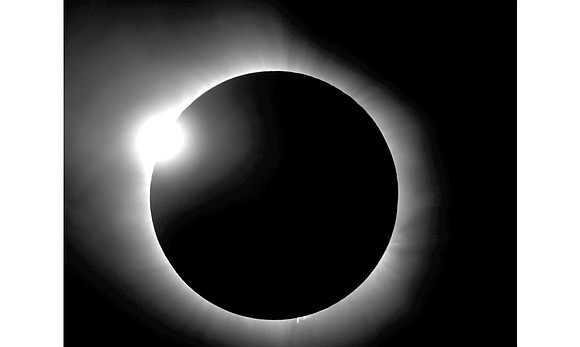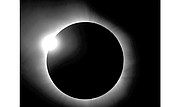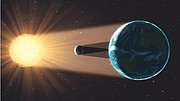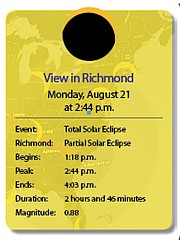Eclipse 2017
Rare total solar eclipse a chance to see ‘pure science’
8/18/2017, 2:05 p.m.

By Holly Rodriguez
The last time Carroll Ellis, a geoscience educator at the MathScience Innovation Center in Henrico County, saw a total solar eclipse, the price of a loaf of bread was less than a quarter, the average price of a home was $24,000 and he was learning how to use a microscope, a gift from his parents.
The year was 1970.
He and his father traveled with the Thomas Jefferson High School Science Club to Virginia Beach to watch the eclipse. He said the experience was life-changing.
“I said to myself, ‘I’ll go to the next one,’ and I didn’t realize at first that I’d have to wait nearly 50 years to do it,” Mr. Ellis said with a laugh. “I later calculated what my age would be, and realized that I’d be an old man. I wondered whether or not I’d be able to make it.”
On Monday, Aug. 21, he will fulfill that promise to himself when he, a colleague and their families view the total eclipse in Casper, Wyo.
While some leaders of ancient cultures used events like a solar eclipse to prove their connection to the gods to strike fear in the masses, he said the rare occurrence of a solar eclipse today is an opportunity for youths to see “pure science.”
“The tech we see and use every day … young people don’t see it as science, particularly urban students who have limited access to see and interact with the natural world,” he said.
The eclipse is “an opportunity to witness a rare phenomenon, and it hopefully will generate interest in the natural sciences, particularly for African-American youths.”










